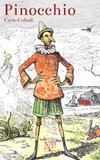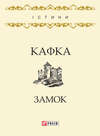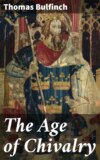Kitabı oku: «The Classic Myths in English Literature and in Art (2nd ed.) (1911)», sayfa 32
In Art. Beside the representations of Jupiter noted in the text may be mentioned that on the eastern frieze of the Parthenon; the Jupiter Otricoli in the Vatican; also the Jupiter and Juno (painting) by Annibale Carracci; the Jupiter (sculpture) by Benvenuto Cellini.
Table A. The Great Gods of Olympus


26. Juno was called by the Romans Juno Lucina, the special goddess of childbirth. In her honor wives held the festival of the Matronalia on the first of March of each year. The Latin Juno is for Diou-n-on, from the stem Diove, and is the feminine parallel of Jovis, just as the Greek Dione (one of the loves of Zeus) is the feminine of Zeus. These names (and Diana, too) come from the root div, 'to shine,' 'to illumine.' There are many points of resemblance between the Italian Juno and the Greek Dione (identified with Hera, as Hera-Dione). Both are goddesses of the moon (?), of women, of marriage; to both the cow (with moon-crescent horns) is sacred. See Roscher, 21, 576-579. But Overbeck insists that the loves of Zeus are deities of the earth: "The rains of heaven (Zeus) do not fall upon the moon."
Illustrative. W. S. Landor, Hymn of Terpander to Juno; Lewis Morris, Heré, in The Epic of Hades.
In Art. Of the statues of Juno the most celebrated was that made by Polyclitus for her temple between Argos and Mycenæ. It was of gold and ivory. See Paus. 2, 17, 4. The goddess was seated on a throne of magnificent proportions; she wore a crown upon which were figured the Graces and the Hours; in one hand she held a pomegranate, in the other a scepter surmounted by a cuckoo. Of the extant representations of Juno the most famous are the Argive Hera (Fig. 9 in the text), the torso in Vienna from Ephesus, the Hera of the Vatican at Rome, the bronze statuette in the Cabinet of Coins and Antiquities in Vienna, the Farnese bust in the National Museum in Naples, the Ludovisi bust in the villa of that name in Rome, the Pompeian wall painting of the marriage of Zeus and Hera (given by Baumeister, Denkmäler 1, 649; see also Roscher, 13, 2127), and the Juno of Lanuvium.
27. Athenë (Athena) has some characteristics of the warlike kind in common with the Norse Valkyries, but she is altogether a more ideal conception. The best description of the goddess will be found in Homer's Iliad, 5, 730 et seq.
The derivation of Athene is uncertain (Preller). Related, say some, to æthēr, αἰθήρ, the clear upper air; say others, to the word anthos, ἄνθος, 'a flower' – virgin bloom; or (see Roscher, p. 684) to athēr, ἀθήρ, 'spear point.' Max Müller derives Athene from the root ah, which yields the Sanskrit Ahanâ and the Greek Daphne, the Dawn (?). Hence Athene is the Dawn-goddess; but she is also the goddess of wisdom, because "the goddess who caused people to wake was involuntarily conceived as the goddess who caused people to know" (Science of Language, 1, 548-551). This is poor philology.
Epithets applied to Athene are the bright-eyed, the gray-eyed, the ægis-bearing, the unwearied daughter of Zeus.
The festival of the Panathenæa was celebrated at Athens yearly in commemoration of the union of the Attic tribes. See C. 176-181.
The name Pallas characterizes the goddess as the brandisher of lightnings. Her Palladium – or sacred image – holds always high in air the brandished lance.
Minerva, or Menerva, is connected with Latin mens, Greek ménos, Sanskrit manas, 'mind'; not with the Latin mane, 'morning.' The relation is not very plausible between the awakening of the day and the awakening of thought (Max Müller, Sci. Lang, 1, 552).
For the meaning of the Gorgon, see Commentary on the myth of Perseus.
Illustrative . Byron, Childe Harold, 4, 96, the eloquent passage beginning,
Can tyrants but by tyrants conquer'd be,
And Freedom find no champion and no child
Such as Columbia saw arise when she
Sprung forth a Pallas, arm'd and undefiled?
Shakespeare, Tempest, IV, i; As You Like It, I, iii; Winter's Tale, IV, iii; Pericles, II, iii; Milton, Paradise Lost, 4, 500; Comus, 701; Arcades, 23; Lewis Morris' Athene, in The Epic of Hades; Byron, Childe Harold, 2. 1-15, 87, 91; Ruskin's Lectures entitled "The Queen of the Air" (Athene); Thomas Woolner's Pallas Athene, in Tiresias.
In Art. The finest of the statues of this goddess was by Phidias, in the Parthenon, or temple of Athena, at Athens. The Athena of the Parthenon has disappeared; but there is good ground to believe that we have, in several extant statues and busts, the artist's conception. (See Frontispiece, the Lemnian Athena, and Fig. 53, the Hope Athena, ancient marble at Deepdene, Surrey.) The figure is characterized by grave and dignified beauty, and freedom from any transient expression; in other words, by repose. The most important copy extant is of the Roman period. The goddess was represented standing; in one hand a spear, in the other a statue of Victory. Her helmet, highly decorated, was surmounted by a Sphinx. The statue was forty feet in height, and, like the Jupiter, covered with ivory and gold. The eyes were of marble, and probably painted to represent the iris and pupil. The Parthenon, in which this statue stood, was also constructed under the direction and superintendence of Phidias. Its exterior was enriched with sculptures, many of them from the hand of the same artist. The Elgin Marbles now in the British Museum are a part of them. Also remarkable are the Minerva Bellica (Capitol, Rome); the Athena of the Acropolis Museum; the Athena of the Ægina Marbles (Glyptothek, Munich); the Minerva Medica (Vatican); the Athena of Velletri in the Louvre. (See Fig. 10.) In modern sculpture, especially excellent are Thorwaldsen's Minerva and Prometheus, and Cellini's Minerva (on the base of his Perseus). In modern painting, Tintoretto's Minerva defeating Mars.
28. While the Latin god Mars corresponds with Ares, he has also not a few points of similarity with the Greek Phœbus; for both names, Mars and Phœbus, indicate the quality shining. In Rome, the Campus Martius (field of Mars) was sacred to this deity. Here military maneuvers and athletic contests took place; here Mars was adored by sacrifice, and here stood his temple, where his priests, the Salii, watched over the sacred spear and the shield, Ancile, that fell from heaven in the reign of Numa Pompilius. Generals supplicated Mars for victory, and dedicated to him the spoils of war. See Roscher, pp. 478, 486, on the fundamental significance, philosophical and physical, of Ares. On the derivation of the Latin name Mars, see Roscher (end of article on Apollo).
Illustrative in Art. Of archaic figures, that upon the so-called François Vase in Florence represents Ares bearded and with the armor of a Homeric warrior. In the art of the second half of the fifth century B.C., he is represented as beardless, standing with spear and helmet and, generally, chlamys (short warrior's cloak); so the marble Ares statue (called the Borghese Achilles) in the Louvre. There is a later type (preferred in Rome) of the god in Corinthian helmet pushed back from the forehead, the right hand leaning on a spear, in the left a sword with point upturned, over the left arm a chlamys. The finest representation of the deity extant is the Ares Ludovisi in Rome, probably of the second half of the fourth century B.C., – a sitting figure, beautiful in form and feature, with an Eros playing at his feet. (See Fig. 11.) Modern sculpture: Thorwaldsen's relief, Mars and Cupid. Modern painting, Raphael's Mars (text, Fig. 12).
29. On the derivation of Hephæstus, see Roscher, p. 2037. From Greek aphē, 'to kindle,' or pha, 'to shine,' or spha, 'to burn.' The Latin Vulcan, while a god of fire, is not represented by the Romans as possessed of technical skill. It is said that Romulus built him a temple in Rome and instituted the Vulcanalia, – a festival in honor of the god. The name Vulcanus, or Volcanus, is popularly connected with the Latin fulgere, 'to flash' or 'lighten,' fulgur a 'flash of lightning,' etc. It is quite natural that, in many legends, fire should play an active part in the creation of man. The primitive belief of the Indo-Germanic race was that the fire-god, descending to earth, became the first man; and that, therefore, the spirit of man was composed of fire. Vulcan is also called by the Romans Mulciber, from mulceo, 'to soften.'
Illustrative. Shakespeare, Twelfth Night, V, i; Much Ado About Nothing, I, i; Troilus and Cressida, I, iii; Hamlet, III, ii; Milton, Paradise Lost, 1, 740:
From morn
To noon he fell, from noon to dewy eve,
A summer's day; and with the setting sun
Dropt from the zenith, like a falling star,
On Lemnos, the Ægean isle.
In Art. Various antique illustrations are extant of the god as a smith with hammer, or at the forge (text, Fig. 13); one of him working with the Cyclopes; a vase painting of him adorning Pandora; one of him assisting at the birth of Minerva; and one of his return to Olympus led by Bacchus and Comus. Of modern paintings the following are noteworthy: J. A. Wiertz, Forge of Vulcan; Velasquez, Forge of Vulcan (Museum, Madrid) (text, Fig. 56); the Forge of Vulcan by Tintoretto. Thorwaldsen's piece of statuary, Vulcan forging Arrows for Cupid, is justly famous.
30. Castalia: on the slopes of Parnassus, sacred to Apollo and the Muses. Cephissus: in Phocis and Bœotia. (Another Cephissus flows near Athens.)
Interpretative. The birth, wanderings, return of Apollo, and his struggle with the Python, etc., are explained by many scholars as symbolic of the annual course of the sun. Apollo is born of Leto, who is, according to hypothesis, the Night from which the morning sun issues. His conflict with the dragon reminds one of Siegfried's combat and that of St. George, The dragon is variously interpreted as symbolical of darkness, mephitic vapors, or the forces of winter, which are overcome by the rays of the springtide sun. The dragon is called Delphyne, or Python. The latter name may be derived simply from that part of Phocis (Pytho) where the town of Delphi was situate, or that again from the Greek root pūth, 'to rot,' because there the serpent was left by Apollo to decay; or from the Greek pŭth, 'to inquire,' with reference to the consultation of the Delphian or Pythian oracle. "It is open to students to regard the dolphin as only one of the many animals whose earlier worship is concentrated in Apollo, or to take the creature for the symbol of spring when seafaring becomes easier to mortals, or to interpret the dolphin as the result of a volks-etymologie (popular derivation), in which the name Delphi (meaning originally a hollow in the hills) was connected with delphis, the dolphin." – Lang, Myth, Ritual, etc., 2, 197. Apollo is also called Lycius, which means, not the wolf-slayer, as is sometimes stated, for the wolf is sacred to Apollo, but either the wolf-god (as inheriting an earlier wolf-cult) or the golden god of Light. See Preller and Roscher. This derivation is more probable than that from Lycia in Asia Minor, where the god was said originally to have been worshiped. To explain certain rational myths of Apollo as referring to the annual and diurnal journeys of the sun is justifiable. To explain the savage and senseless survivals of the Apollo-myth in that way is impossible.
Festivals. The most important were as follows: (1) The Delphinia, in May, to celebrate the genial influence of the young sun upon the waters, in opening navigation, in restoring warmth and life to the creatures of the wave, especially to the dolphins, which were highly esteemed by the superstitious seafarers, fishermen, merchants, etc. (2) The Thargelia, in the Greek month of that name, our May, which heralded the approach of the hot season. The purpose of this festival was twofold: to propitiate the deity of the sun and forfend the sickness of summer; to celebrate the ripening of vegetation and return thanks for first-fruits. These festivals were held in Athens, Delos, and elsewhere. (3) The Hyacinthian fast and feast of Sparta, corresponding in both features to the Thargelian. It was held in July, in the oppressive days of the Dog Star, Sirius. (4) The Carnean of Sparta, celebrated in August. It added to the propitiatory features of the Hyacinthian, a thanksgiving for the vintage. (5) Another vintage-festival was the Pyanepsian, in Athens. (6) The Daphnephoria: "Familiar to many English people from Sir Frederick Leighton's picture. This feast is believed to have symbolized the year… An olive branch supported a central ball of brass, beneath which was a smaller ball, and thence little globes were hung." "The greater ball means the sun, the smaller the moon, the tiny globes the stars, and the three hundred and sixty-five laurel garlands used in the feast are understood to symbolize the days." (Proclus and Pausanias.) – Lang, Myth, Ritual, etc., 2. 194, 195. Apollo is also called the Sminthian, or Mouse-god, because he was regarded either as the protector or as the destroyer of mice. In the Troad mice were fed in his temple; elsewhere he was honored as freeing the country from them. As Mr. Lang says (Myth, Ritual, etc., 2, 201), this is intelligible "if the vermin which had once been sacred became a pest in the eyes of later generations."
Oracle of Delphi. It had been observed at a very early period that the goats feeding on Parnassus were thrown into convulsions when they approached a certain long deep cleft in the side of the mountain. This was owing to a peculiar vapor arising out of the cavern, and a certain goatherd is said to have tried its effects upon himself. Inhaling the intoxicating air, he was affected in the same manner as the cattle had been; and the inhabitants of the surrounding country, unable to explain the circumstance, imputed the convulsive ravings to which he gave utterance while under the power of the exhalations to a divine inspiration. The fact was speedily spread abroad, and a temple was erected on the spot. The prophetic influence was at first variously attributed to the goddess Earth, to Neptune, Themis, and others, but it was at length assigned to Apollo, and to him alone. A priestess was appointed whose office it was to inhale the hallowed air, and she was named the Pythia. She was prepared for this duty by previous ablution at the fountain of Castalia, and being crowned with laurel was seated upon a tripod similarly adorned, which was placed over the chasm whence the divine afflatus proceeded. Her inspired words while thus situated were interpreted by the priests.
Other famous oracles were that of Trophonius in Bœotia and that of the Egyptian Apis. Since those who descended into the cave at Lebadea to consult the oracle of Trophonius were noticed to return dejected and melancholy, the proverb arose which was applied to a low-spirited person, "He has been consulting the oracle of Trophonius."
At Memphis the sacred bull Apis gave answer to those who consulted him, by the manner in which he received or rejected what was presented to him. If the bull refused food from the hand of the inquirer, it was considered an unfavorable sign, and the contrary when he received it.
It used to be questioned whether oracular responses ought to be ascribed to mere human contrivance or to the agency of evil spirits. The latter opinion would of course obtain during ages of superstition, when evil spirits were credited with an influence over human affairs. A third theory has been advanced since the phenomena of mesmerism have attracted attention: that something like the mesmeric trance was induced in the Pythoness, and the faculty of clairvoyance called into action.
Scholars have also sought to determine when the pagan oracles ceased to give responses. Ancient Christian writers assert that they became silent at the birth of Christ, and were heard no more after that date; Milton adopts this view in his Hymn on the Nativity, and in lines of solemn and elevated beauty pictures the consternation of the heathen idols at the advent of the Saviour:
The Oracles are dumb;
No voice or hideous hum
Runs through the archèd roof in words deceiving.
Apollo from his shrine
Can no more divine,
With hollow shriek the steep of Delphos leaving.
No nightly trance, or breathèd spell
Inspires the pale-eyed priest from the prophetic cell.
Illustrative. Spenser, Faerie Queene, 1, 2, 2; 1, 2, 29; 1, 11, 31; 1, 12, 2. Sir Philip Sidney, Astrophel and Stella; as, for instance, the pretty conceit beginning
Phœbus was judge between Jove, Mars, and Love,
Of those three gods, whose arms the fairest were.
Dekker, The Sun's Darling; Burns (as in the Winter Night) and other Scotch song-writers find it hard to keep Phœbus out of their verses; Spenser, Epithalamion; Shakespeare, Midsummer Night's Dream, II, i (Apollo and Daphne); Cymbeline (Cloten's Serenade); Love's Labour's Lost, IV, iii; Taming of the Shrew, Induction ii; Winter's Tale, II, i; III, i; III, ii; Titus Andronicus, IV, i; Drayton, Song 8; Tickell, To Apollo making Love; Swift, Apollo Outwitted; Pope, Essay on Criticism, 34; Dunciad, 4, 116; Prologue to Satires, 231; Miscellaneous, 7, 16; Armstrong, The Art of Preserving Health.
Poems. Drummond of Hawthornden, Song to Phœbus; Keats, Hymn to Apollo; A. Mary F. Robinson, A Search for Apollo, and In Apollo's Garden; Shelley, Homer's Hymn to Apollo; Aubrey De Vere, Lines under Delphi; Lewis Morris, Apollo, in The Epic of Hades; R. W. Dixon, Apollo Pythius.
The Python. Milton, Paradise Lost, 10, 531; Shelley, Adonais. Oracles. Milton, Paradise Lost, 1. 12, 515; 5, 382; 10, 182; Paradise Regained, 1. 395, 430, 456, 463; 3, 13; 4, 275; Hymn on the Nativity, 173. In Cowper's poem of Yardley Oak there are mythological allusions appropriate to this subject. On Dodona, Byron, Childe Harold, 2, 53; Tennyson, The Talking Oak. Byron alludes to the oracle of Delphi when speaking of Rousseau, whose writings he conceives did much to bring on the French Revolution: Childe Harold, 3, 81, —
For then he was inspired, and from him came,
As from the Pythian's mystic cave of yore,
Those oracles which set the world in flame,
Nor ceased to burn till kingdoms were no more.
In Art. One of the most esteemed of all the remains of ancient sculpture is the statue of Apollo, called the Belvedere from the name of the apartment of the Pope's palace at Rome in which it is placed (see Fig. 15). The artist is unknown. It is conceded to be a work of Roman art, of about the first century of our era (and follows a type fashioned by a Greek sculptor of the Hellenistic period, probably in bronze). A variation of the type has been discovered in a bronze statuette which represents Apollo holding in the left hand an ægis. Some scholars have therefore surmised that the Apollo of the original was similarly equipped. The Belvedere Apollo, however, is a standing figure, in marble, more than seven feet high, naked except for the cloak which is fastened around the neck and hangs over the extended left arm. It is restored to represent the god in the moment when he has shot the arrow to destroy the monster Python. The victorious divinity is in the act of stepping forward. The left arm which seems to have held the bow is outstretched, and the head is turned in the same direction. In attitude and proportion the graceful majesty of the figure is unsurpassed. The effect is completed by the countenance, where, on the perfection of youthful godlike beauty, there dwells the consciousness of triumphant power. To this statue Byron alludes in Childe Harold, 4, 161:
Or view the Lord of the unerring bow,
The God of life, and poetry, and light, —
The Sun, in human limbs arrayed, and brow
All radiant from his triumph in the fight;
The shaft hath just been shot – the arrow bright
With an immortal's vengeance; in his eye
And nostril, beautiful disdain, and might
And majesty flash their full lightnings by,
Developing in that one glance the Deity.
The standing figure in our text reproduces this conception.427 Also famous in sculpture are the "Adonis" Apollo of the Vatican (Fig. 14, text); the Greek bronze from Thessaly (Fig. 16, text); the Palatine Apollo in the Vatican (Fig. 66, text); the Apollo Citharœdus of the National Museum, Naples, and the Glyptothek, Munich; the Lycian Apollo; the Apollo Nomios; Apollo of Thera; the Apollo of Michelangelo (National Museum, Florence). A painting of romantic interest is Paolo Veronese's St. Christina refusing to adore Apollo. Of symbolic import is the Apollo (Sunday) by Raphael in the Vatican. Phœbus and Boreas by J. F. Millet.
32. Latona. A theory of the numerous love-affairs of Jupiter is given in 24 of the text. Delos is the central island of the Cyclades group in the Ægean. With its temple of Apollo it was exceedingly prosperous.
Interpretative. Latona (Leto), according to ancient interpreters, was night, – the shadow, therefore, of Juno (Hera), if Hera be the splendor of heaven. But the early myth-makers would hardly have reasoned so abstrusely. It is not at all certain that the name Leto means darkness (Preller 1, 190, note 4); and even if light is born of or after darkness, the sun (Apollo) and the moon (Artemis, or Diana) can hardly be considered to be twins of Darkness (Leto), for they do not illuminate the heavens at the same time. – Lang, Myth, Ritual, etc., 2, 199.
Illustrative. Byron's allusion to Delos in Don Juan, 3, 86:
The isles of Greece! the isles of Greece!
Where burning Sappho loved and sung,
Where grew the arts of war and peace,
Where Delos rose, and Phœbus sprung!
Eternal summer gilds them yet,
But all, except their sun, is set.
See Milton's Sonnet, "I did but prompt the age to quit their clogs," for allusion to Latona.
In Art. In the shrine of Latona in Delos there was, in the days of Athenæus, a shapeless wooden idol.
Diana. The Latin Diana means either "goddess of the bright heaven," or "goddess of the bright day." She is frequently identified with Artemis, Hecate, Luna, and Selene. According to one tradition, Apollo and Diana were born at Ortygia, near Ephesus. Diana of the Ephesians, referred to (Acts xix, 28), was a goddess of not at all the maidenly characteristics that belonged to the Greek Artemis (Roscher, p. 591; A. Lang, 2, 217). Other titles of Artemis are Munychia, the moon-goddess; Calliste, the fair, or the she-bear; Orthia, the severe, worshiped among the Taurians with human sacrifices; Agrotera, the huntress; Pythia; Eileithyia, goddess of childbirth; Cynthia, born on Mount Cynthus.
Illustrative. Spenser, Faerie Queene, 1, 7, 5; 1, 12, 7; Shakespeare, Merchant of Venice, V, i, "Come, ho, and wake Diana with a hymn," etc.; Twelfth Night, I, iv; Midsummer Night's Dream, I, iv; All's Well that Ends Well, I, iii; IV, ii; IV, iv; Butler, Hudibras, 3, 2, 1448. Poems: B. W. Procter, The Worship of Dian; W. W. Story, Artemis; E. W. Gosse, The Praise of Artemis; E. Arnold, Hymn of the Priestess of Diana; Wordsworth, To Lycoris; Lewis Morris, Artemis, in The Epic of Hades; A. Lang, To Artemis. Phœbe (Diana): Spenser, Epithalamion; Keats, To Psyche. Cynthia (Diana): Spenser, Prothalamion, Epithalamion; Milton, Hymn on the Nativity; H. K. White, Ode to Contemplation.
In Art. In art the goddess is represented high-girt for the chase, either in the act of drawing an arrow from her quiver or watching her missile in its flight. She is often attended by the hind. Sometimes, as moon-goddess, she bears a torch. Occasionally she is clad in a chiton, or robe of many folds, flowing to her feet. The Diana of the Hind (à la Biche), in the Palace of the Louvre (see Fig. 18), may be considered the counterpart of the Apollo Belvedere. The attitude much resembles that of Apollo, the sizes correspond and also the styles of execution. The Diana of the Hind is a work of a high order, though by no means equal to the Apollo. The attitude is that of hurried and eager motion, the face that of a huntress in the excitement of the chase. The left hand of the goddess is extended over the forehead of the hind which runs by her side, the right arm reaches backward over the shoulder to draw an arrow from the quiver. Fig. 19 in the text is the Artemis Knagia (Diana Cnagia), named after Cnageus, a servant of Diana who assisted in transferring the statue from Crete to Sparta. In Dresden there is a statue of Artemis in the style of Praxiteles (Fig. 68, text); and in the Louvre an ancient marble called the Artemis of Gabii (Fig. 77, text).
In modern painting, noteworthy are the Diana and her Nymphs of Rubens; Correggio's Diana (Fig. 17); Jules Lefebvre's Diana and her Nymphs; Domenichino's Diana's Chase. Note also the allegorical Luna (Monday) of Raphael in the Vatican; and D. G. Rossetti's Diana, in crayons.
34. Interpretative. The worship of Aphrodite was probably of Semitic origin, but was early introduced into Greece. The Aphrodite of Hesiod and Homer displays both Oriental and Grecian characteristics. All Semitic nations, except the Hebrews, worshiped a supreme goddess who presided over the moon (or the Star of Love), and over all animal and vegetable life and growth. She was the Istar of the Assyrians, the Astarte of the Phœnicians, and is the analogue of the Greek Aphrodite and the Latin Venus. See Roscher, p. 390, etc. The native Greek deity of love would appear to have been, however, Dione, goddess of the moist and productive soil (C. 26), who passes in the Iliad (5. 370, 428) as the mother of Aphrodite, is worshiped at Dodona by the side of Zeus, and is regarded by Euripides as Thyone, mother of Dionysus (Preller I, 259).
The epithets and names most frequently applied to Aphrodite are the Paphian, Cypris (the Cyprus-born), Cytherea, Erycina (from Mount Eryx), Pandemos (goddess of vulgar love), Pelagia (Aphrodite of the sea), Urania (Aphrodite of ideal love), Anadyomene (rising from the water); she is, also, the sweetly smiling, laughter-loving, bright, golden, fruitful, winsome, flower-faced, blushing, swift-eyed, golden-crowned.
She had temples and groves in Paphos, Abydos, Samos, Ephesus, Cyprus, Cythera, in some of which – for instance, Paphos – gorgeous annual festivals were held. See Childe Harold, I, 66.
Venus was a deity of extreme antiquity among the Romans, but not of great importance until she had acquired certain attributes of the Eastern Aphrodite. She was worshiped as goddess of love, as presiding over marriage, as the goddess who turns the hearts of men, and, later, even as a goddess of victory. A festival in her honor, called the Veneralia, was held in Rome in April.
Illustrative. See Chaucer's Knight's Tale for frequent references to the goddess of love; also the Court of Love; Spenser's Prothalamion, and Epithalamion, "Handmaids of the Cyprian queen"; Shakespeare, Tempest, IV, i; Merchant of Venice, II, vi; Troilus and Cressida, IV, v; Cymbeline, V, v; Romeo and Juliet, II, i; Milton, L'Allegro; Paradise Regained, 2, 214; Comus, 124; Pope, Rape of the Lock 4, 135; Spring, 65; Summer, 61; Thomas Woolner, Pygmalion (Cytherea).
Poems. Certain parts of Shakespeare's Venus and Adonis and occasional stanzas in Swinburne's volume, Laus Veneris, may be adapted to illustrative purposes. Chaucer, The Complaint of Mars and Venus; Thomas Wyatt, The Lover prayeth Venus to conduct him to the Desired Haven. See the melodious chorus to Aphrodite in Swinburne's Atalanta in Calydon; Lewis Morris, Aphrodite, in The Epic of Hades; Thomas Gordon Hake, The Birth of Venus, in New Symbols; D. G. Rossetti, Sonnets; Venus Verticordia, Venus Victrix.
35. In Art. One of the most famous of ancient paintings was the Venus rising from the foam, of Apelles. The Venus found (1820) in the island of Melos, or of Milo (see text, opp. p. 32), now to be seen in the Louvre in Paris, is the work of some sculptor of about the fourth century B.C. Some say that the left hand uplifted held a mirrorlike shield; others, an apple; still others, a trident; and that the goddess was Amphitrite. A masterpiece of Praxiteles was the Venus of Cnidos, based upon which are the Venus of the Capitoline in Rome and the Venus de' Medici in Florence. Also the Venus of the Vatican, which is, in my opinion, superior to both. The Venus of the Medici was in the possession of the princes of that name in Rome when, about two hundred years ago, it first attracted attention. An inscription on the base assigns it to Cleomenes, an Athenian sculptor of 200 B.C., but the authenticity of the inscription is doubtful. There is a story that the artist was employed by public authority to make a statue exhibiting the perfection of female beauty, and that to aid him in his task the most perfect forms the city could supply were furnished him for models. Note Thomson's allusion in the Summer:
So stands the statue that enchants the world;
So bending tries to veil the matchless boast,
The mingled beauties of exulting Greece.
And Byron's
There too the goddess loves in stone, and fills
The air around with beauty. – Childe Harold, 4, 49-53.
One of the most beautiful of the Greek Aphrodites is the Petworth (opp. p. 126, text).
Of modern paintings the most famous are: the Sleeping Venus and other representations of Venus by Titian; the Birth of Venus by Bouguereau; Tintoretto's Cupid, Venus, and Vulcan; Veronese's Venus with Satyr and Cupid. Modern sculpture: Thorwaldsen's Venus with the Apple; Venus and Cupid; Cellini's Venus; Canova's Venus Victrix, and the Venus in the Pitti Gallery; Rossetti's Venus Verticordia (crayons, water colors, oil).
36. Interpretative. Max Müller traces Hermes, child of the Dawn with its fresh breezes, herald of the gods, spy of the night, to the Vedic Saramâ, goddess of the Dawn. Others translate Saramâ, storm. Roscher derives from the same root as Sarameyas (son of Saramâ), with the meaning Hastener, the swift wind. The invention of the syrinx is attributed also to Pan.
Illustrative. To Mercury's construction of the lyre out of a tortoise shell, Gray refers (Progress of Poesy), "Parent of sweet and solemn-breathing airs, Enchanting shell!" etc. See Shakespeare, King John, IV, ii; Henry IV, IV, i; Richard III, II, i; IV, iii; Hamlet, III, iv; Milton, Paradise Lost, 3, "Though by their powerful art they bind Volatile Hermes"; 4, 717; 11, 133; Il Penseroso, 88; Comus, 637, 962. Poems: Sir T. Martin, Goethe's Phœbus and Hermes; Shelley's translation of Homer's Hymn to Mercury.


















